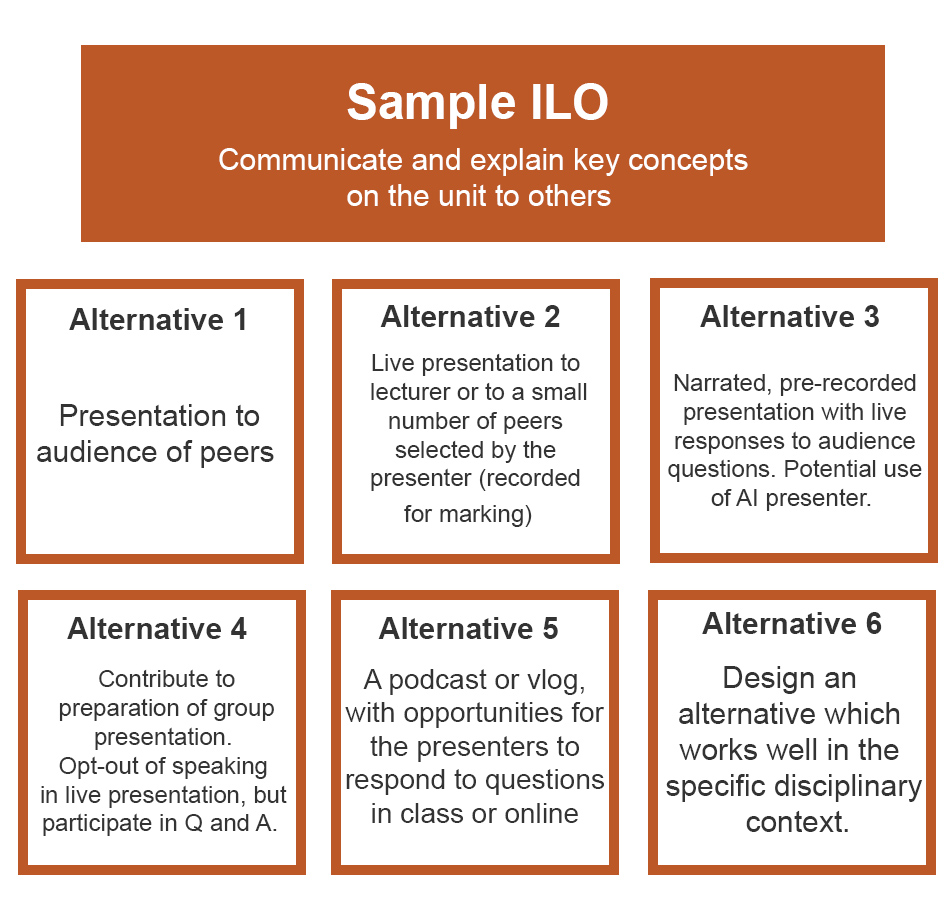Presentation-type assessments

Commentary:
Presentations are useful for building students’ skills to explain concepts and ideas. Since many recruitment processes and jobs require presentations, they are also an authentic assessment approach. Equally, they are challenging for students with a range of anxiety conditions. For some physical disability impacts, additional support may be required.
Formative ideas to build student confidence in giving presentations: Students could be invited to submit draft outlines of a presentation, or given the opportunity of a rehearsal.
Supporting students: Many people are instinctively nervous about speaking in public and will appreciate support. Less confident students may appreciate watching other presentations some weeks before it is their turn, to see that they will be presenting in a safe space. Presenting in a pair or small group may, for some students, alleviate the pressures. Consider the relevant ILOs: if the act of presenting itself is not an expectation, some students may fulfil the requirement by preparing an element of the presentation even if they do not speak (just as some journalists write but do not themselves necessarily read the news). It can help to ensure that a live presentation is in an environment already familiar to the students, and that they have an opportunity to familiarise themselves with any technical equipment in advance.
The suggested alternatives may not be appropriate for students with some disability impacts, for whom an alternative assessment centred on non-verbal or asynchronous communication skills (e.g. create a poster) may be necessary. Specific forms of oral presentation should not be named as an ILO unless, in very rare cases, they would unambiguously qualify as a competence standard (see separate guidance).
